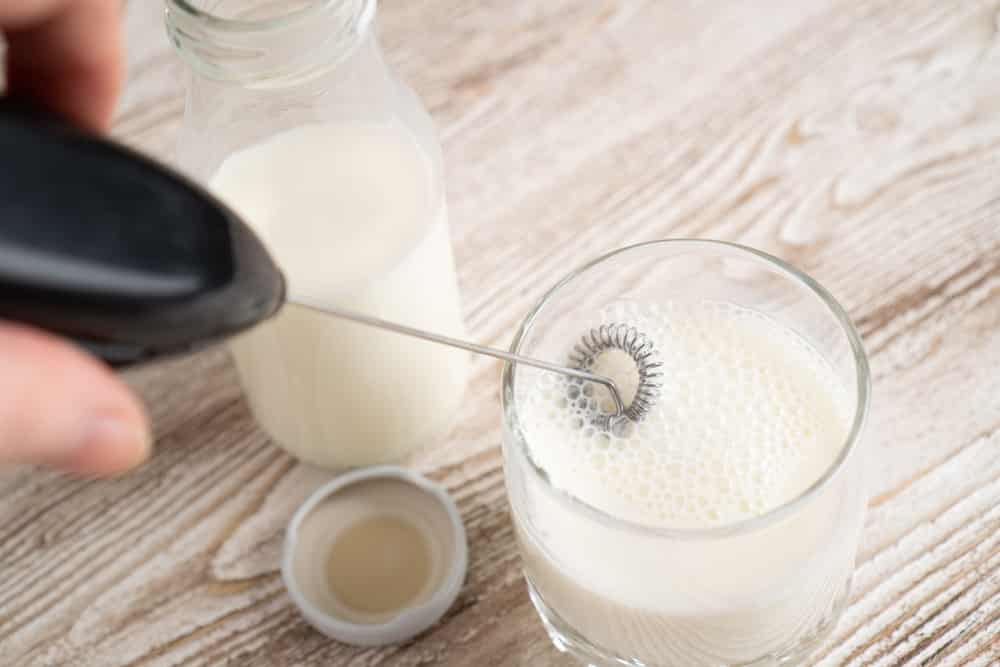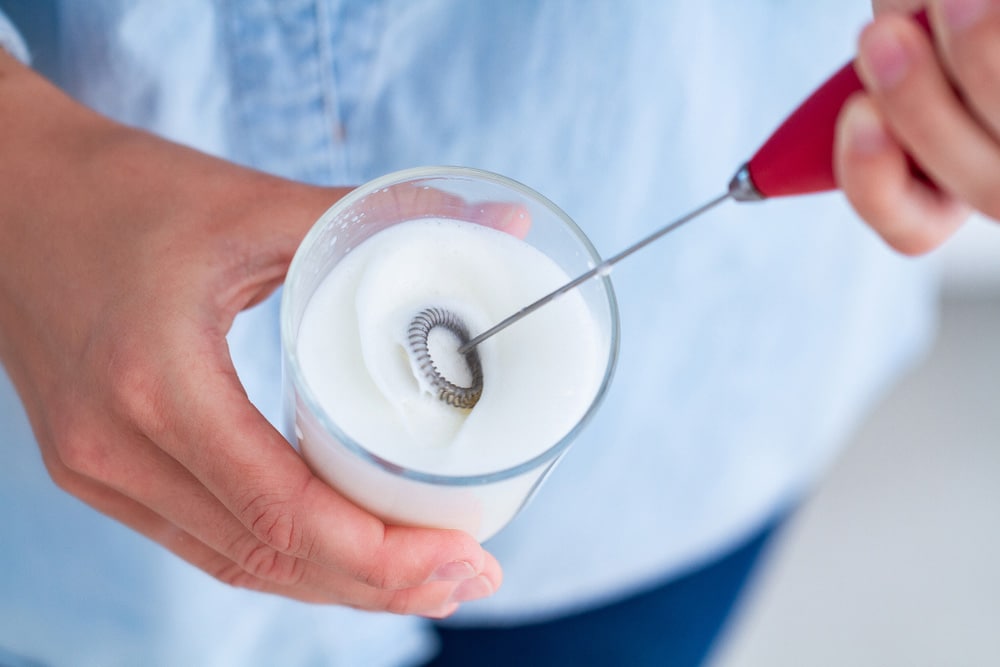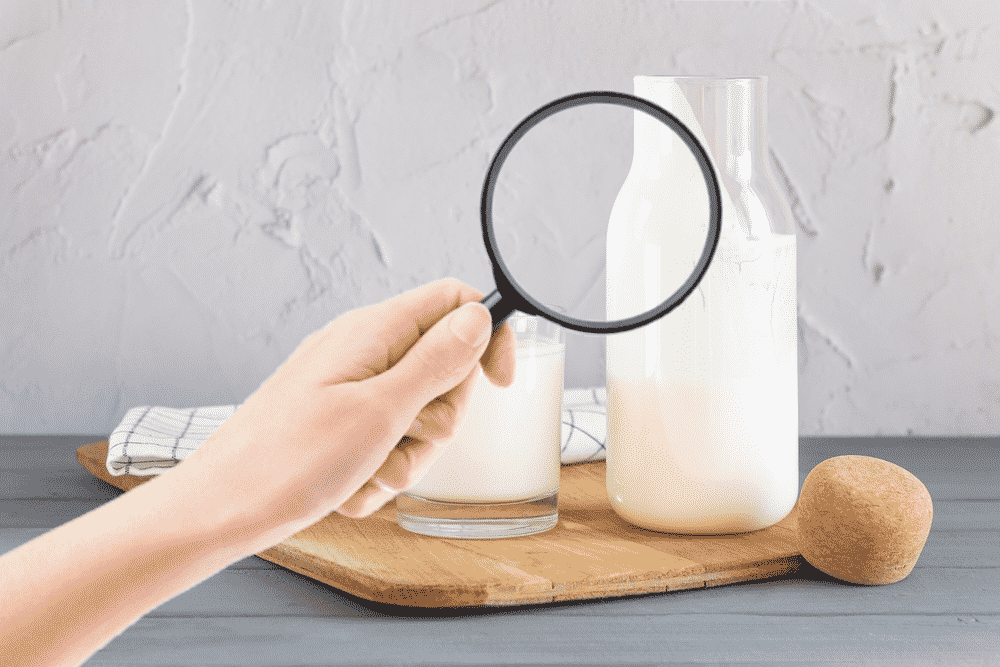
A milk frother is a fantastic kitchen appliance that can make your coffee and tea extra creamy and delicious. They also feature a non-stick coating to make cleaning easy.
However, many problems may occur with milk frothers. While a milk frother is a useful tool, it is important to take care of it properly to minimize the risk of any issues.
Why Is My Milk Frother Not Frothing?
There are several reasons why your milk frother may not be frothing milk properly. To solve this issue, you need to follow these tips.
- Steaming Time
Before you use a milk frother, it is important to heat the milk to the proper temperature and time. You can also use a microwave or other method to warm the milk to the right temperature. The milk should be heated until it becomes foamy.
While the process may seem simple, getting the perfect steaming result takes some practice. A milk frother’s steaming time should be adjusted to the type of milk you are steaming.
Make sure the steam wand tip is submerged at least one-fifth inch beneath the surface of the milk, and tilt the jug to get the most optimal steaming. Once the milk has reached the proper steaming temperature, it will look creamy and shiny.
- High Glycerol Levels in Milk
There are several reasons why your milk frother might not froth. Old milk has high glycerol levels, a natural component of milk fat. This causes it to froth less well than fresh milk. This is because glycerol builds up inside.
If you have an old milk frother, you can try stopping texturizing it when the milk reaches a thick, creamy texture. The smaller the bubbles, the more difficult they are to evaporate and form a dense milk froth.
You may use almond or soy milk, which does not froth well as they do not have the same amount of protein and fat as cow milk. As a result, almond and soy milk must be heated to higher temperatures to froth properly.
- High-Fat Milk
While high-fat milk may seem like an excellent candidate for frothing, it’s not. High-fat milk has glycerol, which can interfere with the foaming process. Skim and nut milk don’t contain this substance, so they’re good options for frothing.
You may have to practice a bit to get the hang of using a milk frother on high-fat milk. The right amount of fat and temperature is necessary for frothing. You don’t want it to be simmering, but just hot enough to be touchable. The foaming process also requires the right size of bubbles.
Larger bubbles will take longer to froth than small ones. Moreover, you can also try lactose-free milk. The key is to experiment with different types of milk until you find one you like. Then, you can experiment with various combinations.
- Milk Temperature
Another key factor is the temperature of the milk. If the milk is too cold, it will not froth. You may have to heat it before you use the milk frother. Otherwise, it’ll turn into butter, which you don’t want. Also, different types of milk require different temperatures to froth.
The most important thing to remember when steaming milk with a milk frother is to follow a few basic guidelines. Milk frothers need to be appropriately heated to achieve the right frothing consistency.
The right temperature is important for aerating the milk, resulting in light foam with a fluffy texture. You can either use normal or almond milk, which should be heated to at least 150 degrees before using the appliance. You may be overheating your milk.
The best way to do this is to use a thermometer to test the temperature. The milk should be hot to the touch but not simmering. If it’s too hot, you won’t get high-quality froth.
- Power Issues
- Power Surge
A power surge is the most common cause for an electric frother to stop working. During a power surge, the power voltage increases or decreases, damaging the circuit inside the frother.
To prevent this from happening, ensure you do not operate any power-hungry devices while using the milk frother. If the power surge is too large, the circuit could burn. This can damage the fuse or the circuit.
Therefore, it is recommended to use a stabilizer when operating electric frothers. This device will help you receive the required voltage and prevent the milk frother from malfunctioning.
- Blown fuse
If your milk frother is not frothing your milk properly, you may have a blown fuse. It can lead to several problems. This can include a short circuit inside the frother, which is the cause of a circuit breaker trip. In most cases, you can fix this problem by replacing the blown fuse.
Before replacing the fuse, turn off the main electric supply. Once you have done this, loosen the screws that secure the panel lid and locate the fuse. However, if you don’t feel confident doing this yourself, call a professional technician and let them replace it for you.
- Poor Whisk Positioning
A milk frother’s whisk position is important for proper frothing. You should start by positioning the whisk tip slightly below the surface of the milk, then adjust the position according to the desired airflow.
The whisk should not be allowed to sit in the same position for too long, as this will result in the milk not becoming frothy. You should also aim to create a silky, wet foam instead of a sloppy mess.
- Out-Of-Power Battery
Your milk frother’s battery can run out of power and stop working. If this happens, you need to change the battery. Just make sure the new battery is the same type as the old one, and install it according to the manufacturer’s instructions.
- Dirt On The Electrical Contacts
If you notice that your milk frother is intermittently not turning on, you may need to clean the electrical contacts on the unit. Dirt that’s on these contacts can damage the efficiency of the device and can even cause it to break.
The most common cause of this problem is crusted milk residue, which traps moisture and corrodes the electrical contacts. You can clean the contacts by wiping them with a soft brush or using a contact cleaner.
However, don’t forget to unplug the machine and be careful not to get water on the electrical contacts, as it may result in a short circuit and a fire.
The Bottom Line
Like any appliance, milk frothers can develop some problems over time. In general, most problems can be resolved easily. You can try repairing the machine yourself by following this guide. However, if the problem persists, it may require professional repair.




